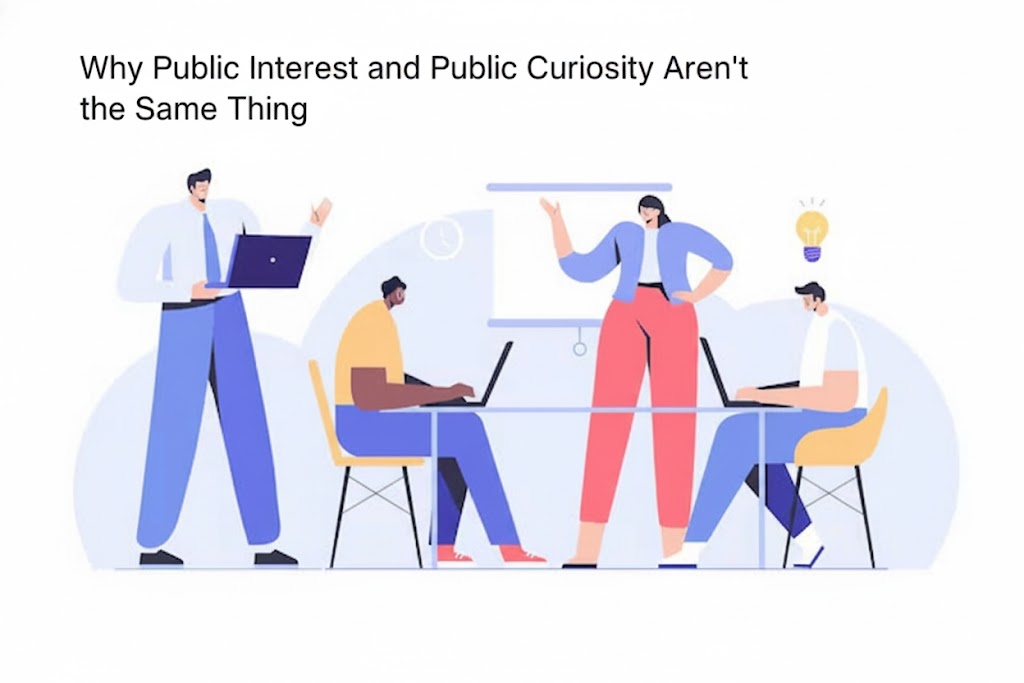When a celebrity scandal dominates headlines, millions tune in. But is that a lasting concern or just a momentary fascination? Understanding the difference between public interest and public curiosity reveals how societies stay informed, how the media shapes attention, and how misinformation spreads.
Public Interest: What Informs and Endures
Public interest focuses on collective welfare – stories that affect safety, rights, or accountability.
It’s why the Watergate investigation or the COVID-19 policy debate mattered. These stories revealed how power works and why transparency is essential.
Journalists often ask three key questions before publishing:
- Does this impact people’s health, safety, or rights?
- Does it promote transparency or accountability?
- Does it lead to long-term public benefit?
Public-interest reporting lasts because it connects to shared consequences, not personal amusement.
Public Curiosity: What Entertains and Fades

Curiosity thrives on novelty and emotion. Platforms like TikTok and X (formerly Twitter) reward engagement, not accuracy.
In 2023, celebrity-scandal videos drew billions of views, outpacing coverage of climate change or public policy.
Curiosity-driven stories are:
- Spontaneous: Born from impulse, not importance.
- Emotional: Fueled by fascination or outrage.
- Short-lived: Forgotten once the next trend arrives.
The Depp–Heard trial generated hundreds of millions of mentions online but overshadowed more consequential global issues. Curiosity feels urgent but rarely informs.
Why We Engage
Research shows public interest stems from rational, civic motives — fairness, justice, and social impact.
Curiosity, by contrast, arises from emotional triggers such as fear of missing out or boredom.
Drivers of Public Interest:
- Civic duty and participation
- Empathy and justice
- Policy and accountability
Drivers of Public Curiosity:
- Novelty and spectacle
- Emotional reactions
- Viral trends and social validation
Both attract attention, but only one leads to change.
Depth and Duration
Public-interest stories sustain engagement for weeks or months. Curiosity fades in days.
The Panama Papers led to hundreds of follow-up reports and global financial reforms.
In contrast, viral moments like the Fyre Festival or Barbie hype peaked and vanished.
Attention built on curiosity is fleeting. Attention built on interest leads to understanding, dialogue, and progress.
Emotion vs. Reason
Curiosity activates the emotional brain, prompting quick reactions.
Public interest engages reasoning and long-term memory, which builds trust.
Emotion can strengthen stories, but only when paired with context and truth.
A simple question helps filter what matters: Does this make me think — or just react?
The Cost of Confusion
When curiosity is mistaken for interest, journalism shifts toward clicks over clarity.
The result: more polarization, less trust.
Audiences face fatigue and misinformation, while news outlets lose credibility.
According to the 2024 Edelman Trust Barometer, media organizations that emphasize verified, contextual reporting retain stronger audience trust over time.
How to Bridge the Divide
Healthy media habits balance curiosity with depth.
For both journalists and readers:
- Frame stories responsibly.
- Verify facts before sharing.
- Follow multiple credible sources.
- Support long-form, investigative journalism.
NetReputation encourages readers to approach digital content critically. Online narratives can shape perceptions — and without fact-checking or context, even honest curiosity can distort truth. Managing what information appears online is part of protecting public trust.
Final Thought
Curiosity captures attention. Interest gives it purpose.
One sparks awareness; the other sustains understanding.
In a world that rewards reaction over reflection, the challenge isn’t to silence curiosity — it’s to anchor it to truth.
That’s how fascination becomes progress, and how credible information — not noise — defines reputation.


